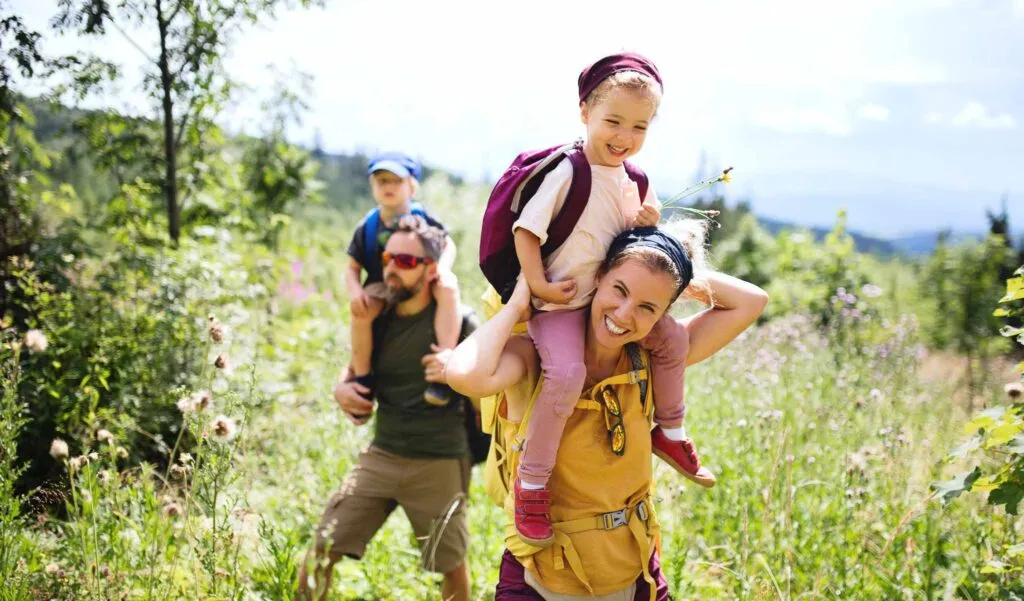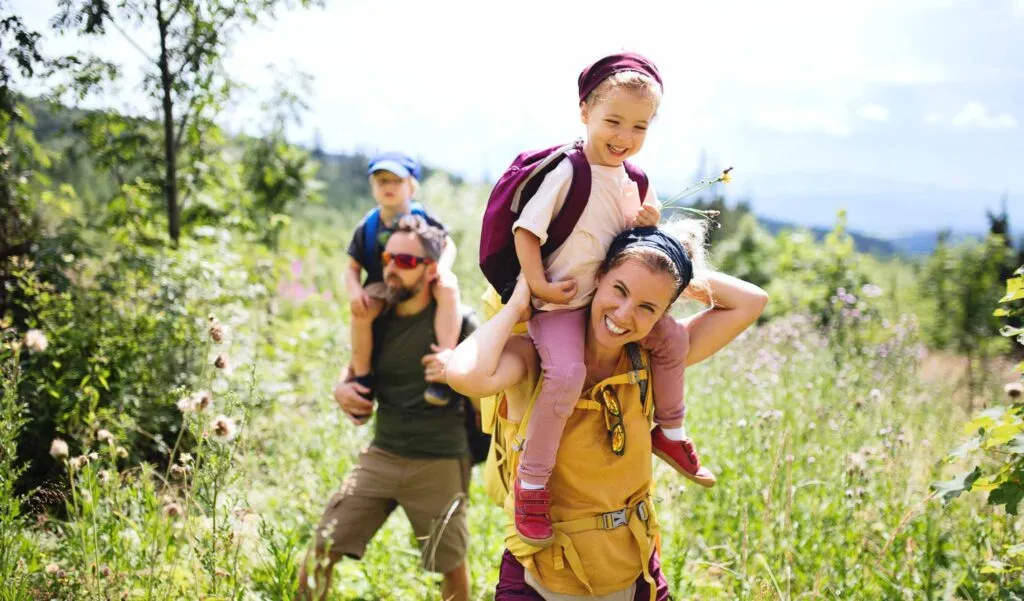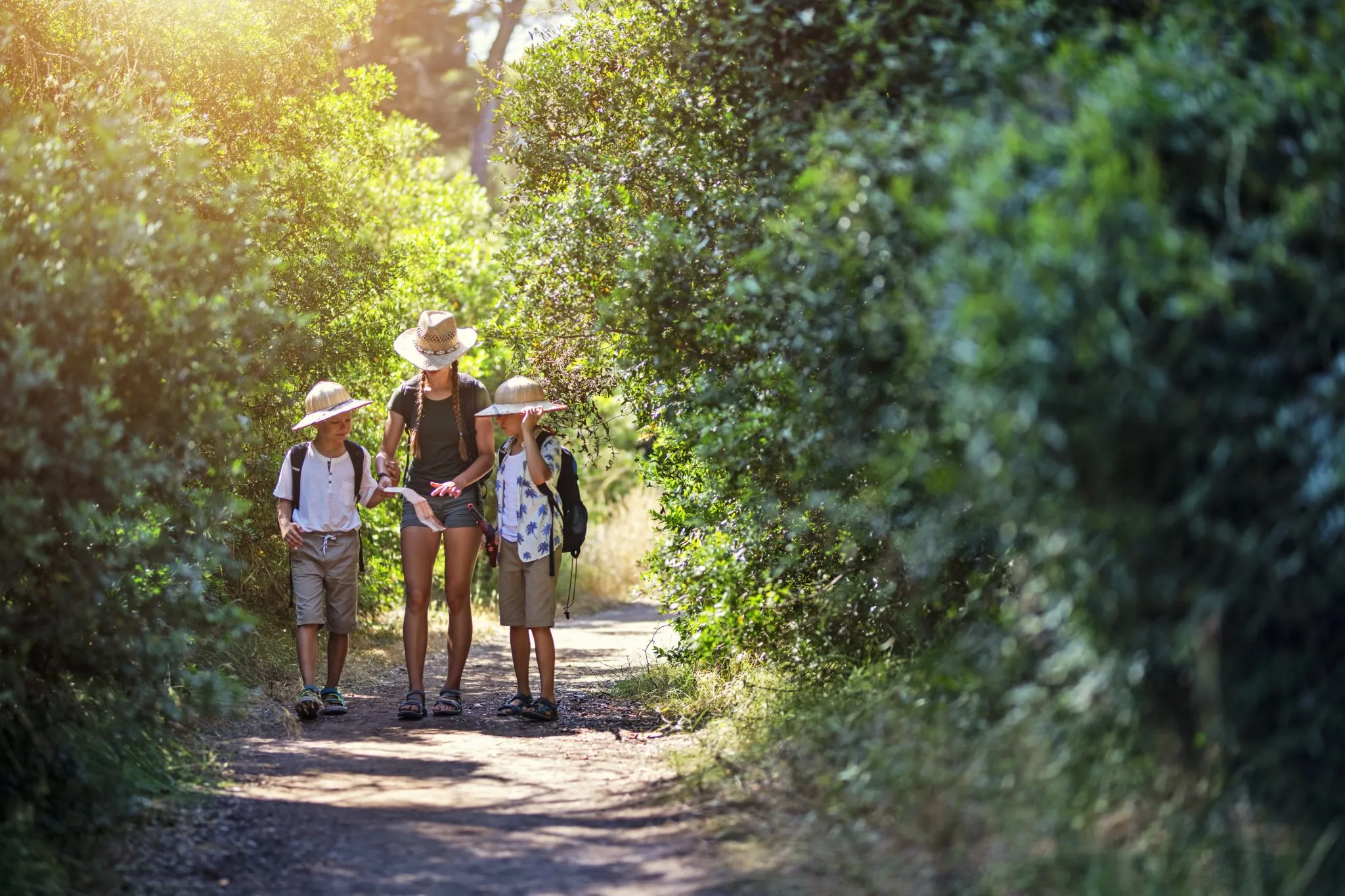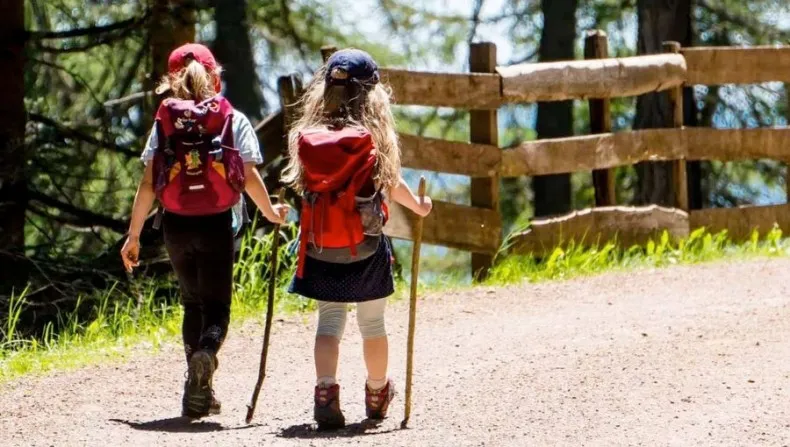
Easy Nature Trails for Kids: The Complete Guide to Family-Friendly Hiking Adventures
As a parent who has spent countless hours exploring easy nature trails for kids across the country, I understand the unique challenges and incredible rewards that come with introducing children to the great outdoors. Finding the right trails that balance accessibility, safety, and engagement can make the difference between a memorable family adventure and a frustrating experience. This comprehensive guide will equip you with everything you need to create lasting memories while fostering your child's love for nature. For more outdoor adventure ideas, visit our homepage at Nature Guests to discover additional family-friendly activities and destinations.
Choosing the Perfect Easy Nature Trails for Kids
When selecting easy nature trails for kids, the key is finding the sweet spot between accessibility and adventure. After years of trial and error with my own children, I've discovered that the most successful family hiking experiences happen on trails that are thoughtfully chosen based on several critical factors.
The ideal trail length for most children ranges from 0.5 to 2 miles, depending on their age and hiking experience. However, distance isn't the only consideration. Elevation gain, terrain difficulty, and available amenities all play crucial roles in determining whether a trail will be enjoyable for your family.

Key Trail Selection Criteria
Trail Surface
Look for well-maintained paths with stable surfaces. Paved trails are excellent for beginners, while packed dirt or gravel paths offer more natural experiences.
Scenic Features
Choose trails with interesting destinations like waterfalls, lakes, or observation decks to maintain children's motivation throughout the hike.
Facilities
Consider trails with restrooms, picnic areas, and parking facilities, especially for longer adventures or when hiking with younger children.
One of the most important aspects I've learned is that easy nature trails for kids should offer multiple exit points or loop options. This flexibility allows you to cut the hike short if children become tired or extend it if they're energetic and engaged. Many of the best easy hiking trails I've discovered feature this adaptability.
Seasonal considerations are equally important when choosing trails. Spring and fall typically offer the most comfortable temperatures and stunning scenery, while summer may require trails with shade and water features. Winter hiking can be magical but requires additional safety precautions and appropriate gear. The easy hiking trails near me that I frequent most often are those that offer year-round accessibility with seasonal variety.
Age-Specific Trail Recommendations and Tips

Understanding how to match easy nature trails for kids with their developmental stages is crucial for creating positive outdoor experiences. Each age group has unique needs, capabilities, and interests that should guide your trail selection and hiking approach.
Ages 2-4: Toddler-Friendly Adventures
For toddlers, the journey is more important than the destination. These little explorers are naturally curious but have limited attention spans and energy reserves. I've found that short and easy hiking trails work best for this age group, typically 0.25 to 0.5 miles in length.
- Choose paved or boardwalk trails for stroller accessibility
- Look for nature centers with interpretive programs
- Select trails with playground equipment or picnic areas nearby
- Plan for frequent stops and allow extra time for exploration
The key with toddlers is flexibility. Some days they'll surprise you with their endurance, while other days they'll need to be carried after 100 yards. Having a quality child carrier is essential for this age group.
Ages 5-8: Building Confidence and Skills
This age group represents the sweet spot for introducing children to hiking. They have enough physical capability to handle moderate distances while still maintaining the wonder and enthusiasm that makes outdoor adventures magical. Family-friendly hiking trails in this category typically range from 1 to 2 miles.
- Introduce basic hiking skills like map reading and trail markers
- Choose trails with educational components or nature scavenger hunts
- Select paths with interesting features like bridges, rocks to climb, or wildlife viewing opportunities
- Allow children to carry their own small backpack with water and snacks
Ages 9-12: Adventure Seekers
Pre-teens are capable of more challenging adventures and often crave excitement. They can handle longer distances and moderate elevation gains, making them ideal candidates for exploring easy hikes with scenic views that offer rewarding destinations.
- Introduce overnight camping combined with day hikes
- Choose trails with photography opportunities to encourage documentation
- Select paths that offer mild challenges like stream crossings or rocky terrain
- Encourage leadership roles in navigation and group management
Pro Tip from My Experience
I've learned that the most successful family hikes happen when you let the slowest hiker set the pace. This usually means adjusting your expectations and embracing the slower rhythm that comes with hiking with children. Some of my most memorable outdoor experiences have happened during these leisurely-paced adventures where we had time to really observe and appreciate nature's details.
Essential Gear for Family Nature Trail Adventures
Having the right gear can make or break your family's hiking experience. Over the years, I've refined my packing list to include only the essentials that truly enhance safety, comfort, and enjoyment on easy nature trails for kids. The key is balancing preparedness with practicality – you don't want to be weighed down by unnecessary equipment.
Must-Have Gear for Kids
Child-Friendly Backpack
A proper kids' hiking backpack encourages independence and responsibility while ensuring comfort during longer adventures.
Adventure Kidz Outdoor Exploration Kit - $16.99Hydration System
Keeping kids hydrated is crucial for maintaining energy and preventing heat-related issues during outdoor activities.
Kids Hydration Backpack with 1.5L Bladder - $30.99
Safety and Navigation Equipment
First Aid Essentials
- Bandages and antiseptic wipes
- Children's pain reliever
- Insect repellent and sunscreen
- Emergency whistle
Weather Protection
- Rain jackets or ponchos
- Sun hats and sunglasses
- Extra layers for temperature changes
- Emergency shelter (space blanket)
Navigation Tools
- Trail maps and compass
- GPS device or smartphone app
- Emergency contact information
- Flashlight or headlamp
Amazon Recommendations for Family Hiking
Perfect size for young hikers to carry their own supplies
Complete outdoor adventure kit with binoculars and tools
Remember that the best gear is the gear you actually use. Start with basic essentials and gradually add items as your family's hiking experience grows. Many of the beginner hiking trails I recommend don't require extensive gear, but having the right basics ensures everyone stays safe and comfortable.
Safety Tips and Emergency Preparedness
Safety should always be the top priority when exploring easy nature trails for kids. While most family hiking adventures proceed without incident, being prepared for emergencies and understanding potential hazards can prevent minor issues from becoming major problems. My approach to safety focuses on prevention, preparation, and education.
Pre-Hike Safety Planning
Research Your Trail
Check current trail conditions, weather forecasts, and any posted warnings. Many easy hiking trails in national parks have real-time condition updates available online.
Share Your Plans
Always inform someone of your hiking plans, including your intended route, expected return time, and emergency contacts. This simple step can be crucial if something goes wrong.
Check Equipment
Inspect all gear before departing, including batteries in flashlights, expiration dates on medications, and the condition of footwear and clothing.
Common Trail Hazards to Avoid
Wildlife Encounters
Teach children to observe wildlife from a distance and never feed wild animals. Make noise while hiking to avoid surprising animals.
Poisonous Plants
Learn to identify common hazardous plants in your area like poison ivy, oak, or sumac. Teach kids the "leaves of three, let it be" rule.
Heat-Related Illness
Watch for signs of dehydration and heat exhaustion, especially in children who may not recognize these symptoms themselves.
Emergency Response Protocols
Having a clear emergency action plan can help you respond quickly and effectively if something goes wrong. I always review basic emergency procedures with my children before we start hiking, turning it into a fun learning experience rather than a scary lecture.
If Someone Gets Lost
- Stay calm and stay put
- Use whistle to signal for help
- Make yourself visible with bright clothing
- Conserve energy and stay warm
For Injuries
- Assess the severity of the injury
- Provide basic first aid if trained
- Call for emergency help if needed
- Keep the injured person warm and comfortable
Teaching Kids Trail Safety
Education is one of the most effective safety tools. I make safety discussions engaging by turning them into games or stories. We practice using whistles, identifying trail markers, and discussing what to do in various scenarios.
When exploring easy hiking trails with waterfalls, we always discuss water safety and the importance of staying on designated paths. These conversations help children understand that safety rules aren't meant to limit fun but to ensure everyone can enjoy the outdoors safely.
Keeping Kids Engaged on Nature Trails
The secret to successful family hiking lies in keeping children engaged and excited about the experience. Over the years, I've developed a collection of activities, games, and strategies that transform easy nature trails for kids from simple walks into exciting adventures. The key is variety – having multiple engagement tools ready to deploy when attention starts to wane.
Nature Scavenger Hunts and Games
Classic Nature Scavenger Hunt
- Find something red, yellow, and green
- Spot three different types of leaves
- Look for animal tracks or signs
- Identify five different sounds
- Find something smooth and something rough
I create age-appropriate lists before each hike, sometimes including photos for non-readers. This keeps kids actively observing their environment rather than just walking.
Educational Nature Games
- Tree identification challenges
- Bird watching with identification guides
- Nature photography contests
- Ecosystem exploration activities
- Weather observation exercises
These activities work particularly well on easy forest hiking trails where there's abundant wildlife and diverse plant life to observe.
Technology Integration for Modern Kids
While I believe in disconnecting from technology during nature experiences, I've found that strategic use of tech can enhance rather than detract from the outdoor experience. Apps for plant identification, GPS tracking, and nature photography can add educational value while still maintaining focus on the natural world.
Storytelling and Imaginative Play
Nature Stories
Create ongoing adventure stories featuring the trail as the setting. Let children contribute plot elements and character development as you walk.
Role-Playing Games
Become nature detectives, wildlife photographers, or park rangers. These roles give children a sense of purpose and responsibility during the hike.
Seasonal Themes
Adapt activities to match the season – leaf collecting in fall, flower identification in spring, or tracking animals in winter snow.
Reward Systems and Motivation
I've found that simple reward systems can work wonders for maintaining motivation on longer hikes. This doesn't mean bribing children with treats, but rather creating meaningful milestones and celebrations along the way.
For example, when we explore pet-friendly easy hikes with our family dog, we celebrate reaching halfway points with special snacks or photo opportunities. These small celebrations help children feel accomplished and motivated to continue.
My Personal Experience and Lessons Learned
From Rookie Mistakes to Family Traditions
My journey with easy nature trails for kids began seven years ago when my oldest was just three years old. Like many parents, I made the classic mistake of overestimating both my child's abilities and my own preparedness. Our first family hike was supposed to be a simple 2-mile loop trail that ended with me carrying a crying toddler for the last mile while my partner managed our overpacked diaper bag and a cranky baby.
That challenging first experience taught me invaluable lessons about realistic expectations, proper planning, and the importance of flexibility. It also sparked my passion for finding and sharing information about truly accessible trails that work for families with young children.
Lessons from Trail Failures
- Weather Preparation: I learned to check weather forecasts multiple times and always pack extra layers after getting caught in an unexpected spring snowstorm.
- Timing is Everything: Starting too late in the day led to rushing and stress. Now we always start early morning adventures.
- Food and Water: I underestimated how much kids need to eat and drink on trails. Now I pack double what I think we'll need.
- Trail Selection: "Easy" doesn't mean the same thing for adults and children. I learned to research trails specifically for their kid-friendly features.
Success Stories and Breakthroughs
Our breakthrough came when we discovered a series of flat hiking trails for easy walks at our local nature preserve. These trails featured boardwalks, interpretive signs, and multiple loop options that allowed us to customize our adventure based on the kids' energy levels.
The day my youngest completed her first full 2-mile hike without being carried remains one of my proudest parenting moments. She was so proud of herself, and it marked the beginning of our family's deeper love for outdoor exploration.
What Parents Say About Family Hiking
"The Adventure Kidz exploration kit was a game-changer for our family hikes. My 5-year-old feels like a real explorer with the binoculars and compass. We've been on 15 hikes this year compared to just 2 last year!"
- Sarah M., Amazon reviewer
"After following family hiking guides, we've discovered so many easy trails near our home. The kids actually ask to go hiking now instead of staying inside. It's become our favorite family activity."
- Mike R., Reddit user
"The hydration backpack recommendation was spot-on. My kids stay hydrated without me having to constantly remind them to drink water. Makes hiking so much more enjoyable for everyone."
- Jennifer L., Quora answer
Seasonal Hiking Insights
Through years of hiking in all seasons, I've learned that each season offers unique opportunities and challenges for families. Spring brings wildflowers and moderate temperatures but also mud and unpredictable weather. Summer offers long days and warm weather but requires careful attention to hydration and heat safety.
Fall is arguably the best season for family hiking, with comfortable temperatures, stunning foliage, and fewer crowds. Winter hiking can be magical, especially on easy nature trails for kids that offer snow activities like snowshoeing or cross-country skiing.
Frequently Asked Questions
What age is appropriate to start hiking with kids?
You can start hiking with children as early as 6 months old using proper carriers, but the ideal age for independent hiking varies by child. Most children can handle short, easy trails (0.5-1 mile) starting around age 3-4. The key is matching the trail difficulty to your child's physical abilities and attention span, always prioritizing safety and enjoyment over distance covered.
How do I choose the right trail difficulty for my family?
When selecting easy nature trails for kids, consider your child's age, fitness level, and hiking experience. Start with shorter distances (under 1 mile) and minimal elevation gain for beginners. Look for trails with interesting features like streams, waterfalls, or wildlife viewing opportunities to maintain engagement. Always have backup plans and exit strategies, and remember that the goal is fun, not completing a challenging hike.
What should I pack for a family day hike?
Essential items include plenty of water (more than you think you'll need), high-energy snacks, first aid supplies, sun protection, weather-appropriate clothing, and emergency supplies like whistles and flashlights. For kids, consider bringing activities like nature scavenger hunt lists, small collection bags, and perhaps a child-friendly camera. Pack everything in a comfortable backpack and consider letting older children carry their own small packs to build responsibility.
How can I keep my kids motivated during longer hikes?
Motivation is key to successful family hiking. Use games, storytelling, and nature activities to keep kids engaged. Set small, achievable goals with celebrations at milestones. Allow children to be leaders sometimes, letting them choose directions at trail intersections or spot wildlife. Bring special trail snacks and create positive associations with hiking through fun activities rather than focusing solely on reaching the destination.
What safety precautions should I take when hiking with children?
Safety should always be the top priority. Always inform someone of your hiking plans, check weather conditions, and carry emergency supplies. Teach children basic trail safety, including staying on marked paths, wildlife awareness, and what to do if they get separated. Ensure everyone has proper footwear and clothing. Consider bringing emergency communication devices for remote areas, and always prioritize conservative decision-making when conditions change.
Conclusion
Exploring easy nature trails for kids offers families an incredible opportunity to connect with nature, build lasting memories, and instill a lifelong love of outdoor adventures. Through careful planning, appropriate gear selection, and realistic expectations, any family can enjoy successful hiking experiences that grow with their children's abilities and interests.
Key Takeaways
- Start with short, easy trails and gradually increase difficulty as children grow
- Proper preparation and gear selection are essential for safety and enjoyment
- Engagement activities and games make hiking more fun and educational
- Flexibility and realistic expectations lead to more successful adventures
- Every family's hiking journey is unique – find what works for your children
Building Long-term Hiking Habits
The goal isn't just to complete hikes, but to create positive associations with outdoor activities that will last a lifetime. When children feel successful, safe, and engaged on trails, they're more likely to continue seeking outdoor adventures as they grow older.
Remember that some of the most memorable family moments happen not at scenic overlooks or trail destinations, but during the quiet conversations, shared discoveries, and problem-solving experiences that occur along the way.
Your Next Steps
Ready to start your family's hiking adventure? Begin by researching local trails that match your family's current abilities, gather the essential gear we've discussed, and plan your first easy nature trail experience. Remember, the best trail is the one your family completes together safely and happily.
The journey of a thousand miles begins with a single step – and for families, that step is often on an easy nature trail designed with kids in mind. Happy hiking, and may your trails be filled with wonder, laughter, and unforgettable memories!

